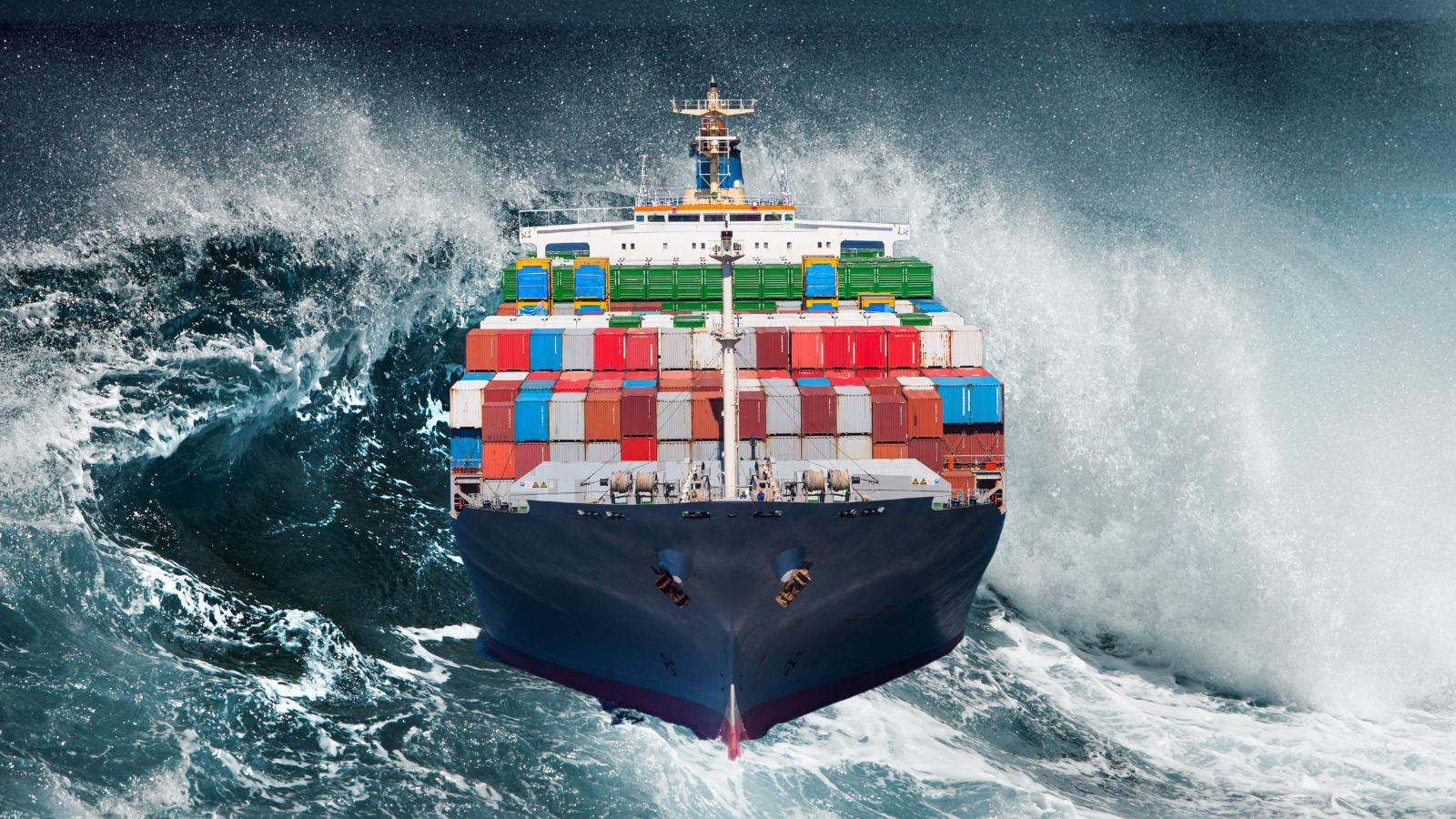Rogue Waves: The Unpredictable Partner in the Logistics Supply Chain

Rogue waves, also known as “freak waves” or “monster waves”, are massive, spontaneous ocean waves that can be up to 100 feet tall. They are a natural phenomenon that can occur in any body of water, including oceans, lakes, and even rivers. These waves can cause significant damage to ships and other vessels, and they can also have a major impact on the supply chain and logistics industry.
Rogue waves shipwreck schedules
One of the primary ways that rogue waves affect the industry is by causing delays in shipping and transportation. When a rogue wave strikes a vessel, it can cause significant damage, resulting in repairs and maintenance that can take weeks or even months to complete. This can delay the shipment of goods and products, causing disruptions throughout the supply chain.
For example, in June 2018, a container ship called the YM Efficiency may have encountered a rogue wave off the coast of Newcastle, Austrialia after departing from Japan. The wave caused a whopping 81 shipping containers to fall overboard and another 62 to incur damage, resulting in significant delays in the delivery of the cargo. The incident also highlighted the risks associated with rogue waves and the importance of investing in specialized equipment to withstand extreme weather conditions.
Rogue waves make a splash!
Additionally, rogue waves can also cause cargo to be permanently lost or damaged during transit. See above… containers in the ocean probably can’t be entirely recovered…
This can result in financial losses for the companies involved, as well as more severe delays in delivering products to paying customers. In some cases, entire shipments may need to be rerouted or canceled altogether, resulting in further disruptions and losses.
Specialized gear: wave essential
Another way that rogue waves can impact the industry is by dramatically increasing transportation costs. In order to mitigate the risk of rogue waves, shipping companies may need to invest in specialized vessels and equipment that are designed to withstand these extreme conditions. This can result in higher operating costs for these companies, which may be passed on to customers in the form of higher shipping rates.
Some investments may be reinforced hulls to withstand the impact, ballast systems to stabilize the vessel in rough seas, advanced navigation systems to detect and avoid rogue waves entirely, and emergency response systems and procedures to quickly address any damage or incidents that occur during transit.
Insurance rates go brrrrrrrr… 💸
Companies that insure shipping vessels and cargo may need to adjust their rates and coverage to account for the increased risk of these waves. This can result in higher insurance premiums for companies that rely on shipping and transportation to move their products.
There is currently limited scientific evidence to suggest that rogue waves are becoming more frequent or intense due to climate change. However, some studies suggest that climate change may lead to changes in ocean currents and weather patterns, which could potentially increase the frequency or intensity of rogue waves in certain regions. Some research has also suggested that the rising sea levels associated with climate change could result in more rogue waves near coastlines and in shallow waters, where they can cause the most damage to ships and other vessels.
Insurance companies are likely well aware of these studies as well!
Preparation for the worst-case scenario
To mitigate the impact of rogue waves on the industry, companies can take several steps. For example, they can invest in specialized equipment and vessels that are designed to withstand extreme weather conditions, including rogue waves. They can also work with their transportation providers to develop contingency plans in the event of disruptions caused by rogue waves, such as rerouting shipments or adjusting delivery schedules.
Rouge waves are a natural phenomenon that can have a major impact on the supply chain and logistics industry. By understanding the risks associated with these waves and taking proactive measures to mitigate their impact, companies can help ensure the safe and efficient delivery of their products to customers around the world.
Valentine's Day is a holiday filled with love, flowers, and lots of chocolate. Let's take a look at this graphic showing just how much goes into Cupid's Birthday every single year.
The blockchain isn’t just that weirdly-named coin that your uncle raved about at the Thanksgiving dinner table.
In a world where being eco-conscious is more important than ever, the transportation game is stepping up its green game.
What are the future trends in logistics? Let's chat about what's cooking in the world of transportation.
Let's face it, the world can be a pretty wild place. Every now and then, global events come along that significantly throw us off-balance - especially in the way everything gets made and shipped.
So, you're in the logistics game, and you know that keeping your customers happy is an absolute must. But how do you figure out if you're actually succeeding at customer service?
Navigating the logistics world can sometimes feel like a unique challenge... but trust me, you've got the skills and determination to make some waves in this industry.
In the hustle and bustle of the logistics world, we all know how vital it is to get things right - and hopefully, the first time. Whether it be getting that package to your doorstep on time or making sure goods reach stores and factories without a hitch. But here’s the real question: how do we keep the tech advancements and good ol’ human touch in perfect harmony in this ever-changing industry?
Whether you're new to the industry or want to step up your game, let’s map out your journey to becoming a first-rate logistics leader while on the move.
Navigating the Current: Inflated Fuel, Wage Woes, and Biden's Approval Slides in the Era of Love in Cyberspace, Fueling Relief, and Charging Ahead with Car Costs and Senior Surge, All Against the Backdrop of Inflated Timelines and Charged Distances.
In the world of logistics, where every second counts and every mile matters, technology is rewriting the rules of the game.
Transportation executives, industry observers, and local politicians nodded approvingly and wholeheartedly welcomed the federal largess. After all, the Bipartisan Infrastructure Bill was a once-in-a-generation investment in the country’s logistics infrastructure. The legislation was long overdue and could help reset the supply-chain mess that caused so much havoc during the pandemic.
Explore the dynamic landscape of today's economy with a visual journey through key trends and data points. From plummeting gasoline prices to intriguing shifts in job openings and consumer sentiment, our collection of graphs and visuals offers an engaging perspective on the economic forces at play.
Explore the latest updates on politics, economics, demographics, and more in our informative blog post. Discover insights into crucial topics such as election dynamics, financial trends, population changes, and public opinion. Stay informed with our in-depth analysis of the issues shaping our world today.
Let’s dive deep into various aspects of the current economic landscape, supported by informative graphs and visuals. From auto owners' struggles with loan payments to the dramatic shifts in global container freight rates, we provide a visual overview of key trends affecting our economy.
Explore Key Trends: Job Declines, Imports Surge, Housing Challenges, Sports Trends, and More in Our Latest Post. Stay Informed!
In the run-up to party nominations, the media delves into horserace analyses, fixated on determining who's leading and who's lagging in the campaign landscape. Trump basks in a substantial lead among Republican contenders, while Biden stands uncontested among Democrats.
Explore the South Coast Air Quality Management District's (AQMD) groundbreaking Indirect Source Rule (ISR) mandate, targeting air quality concerns in Southern California's warehouses. Discover the multifaceted impact on the supply chain industry, as we delve into the advantages and drawbacks of the AQMD ISR mandate.
In our latest blog post, we've compiled a series of informative graphs and visuals that shed light on some crucial economic and societal trends. Let's take a glimpse at some of the key highlights.
In recent years, the push for sustainability and carbon footprint reduction in the transportation industry has intensified. A noteworthy development in this pursuit is the shift from conventional diesel-powered Class 8 trucks to electric power. Advocates of this transition tout its potential for a cleaner environment, reduced operating costs, and heightened energy efficiency. Yet, it is imperative to scrutinize the associated challenges and potential pitfalls.
We're diving deep into a dynamic landscape of economic trends and public sentiments: EV Adoption, Driver Behavior, National Debt, & more.
As inflation continues to make headlines, the impact on public perception and policy remains a critical concern. In this analysis, we delve into the intricacies of inflation reporting, exploring how the Consumer Price Index (CPI) serves as a key metric.
This post delves into various important topics, from nearshoring in supply chains to the 2024 election and economic indicators. Discover the latest insights and trends shaping our world.
Check some of the latest graphics around the web: A series of charts, diagrams, and visual representations showcasing billionaire rankings, transportation employment statistics, mineral demand for EVs, and credit card debt trends.
Let’s delve into the latest U.S. trends: Inflation, Emissions, Consumer Habits, and Hollywood’s Comeback.
In the world of ESG investing, the focus has long been on divesting from brown firms and embracing green ones. However, this conventional approach may not be the most effective way to combat climate change and promote sustainability.
From an in-depth analysis of falling Asian exports to the notable rise in cargo volumes at the Port of Los Angeles to the growing demand for used Teslas. Gain valuable insights into these market shifts and their implications in these comprehensive graphs.
Discover the rising representation of women in the supply chain workforce, top private employers in each state, wealth migration patterns, public confidence levels, energy preferences, air travel recovery, economic growth comparisons, and the latest updates on the job market.
From the impact of the pandemic to the (nearly amusing) rivalry between tech giants… let’s explore the latest trends and developments shaping our world.






























Manifest 2024 served as a reminder of the immense potential that lies ahead in the realm of supply chain technology.